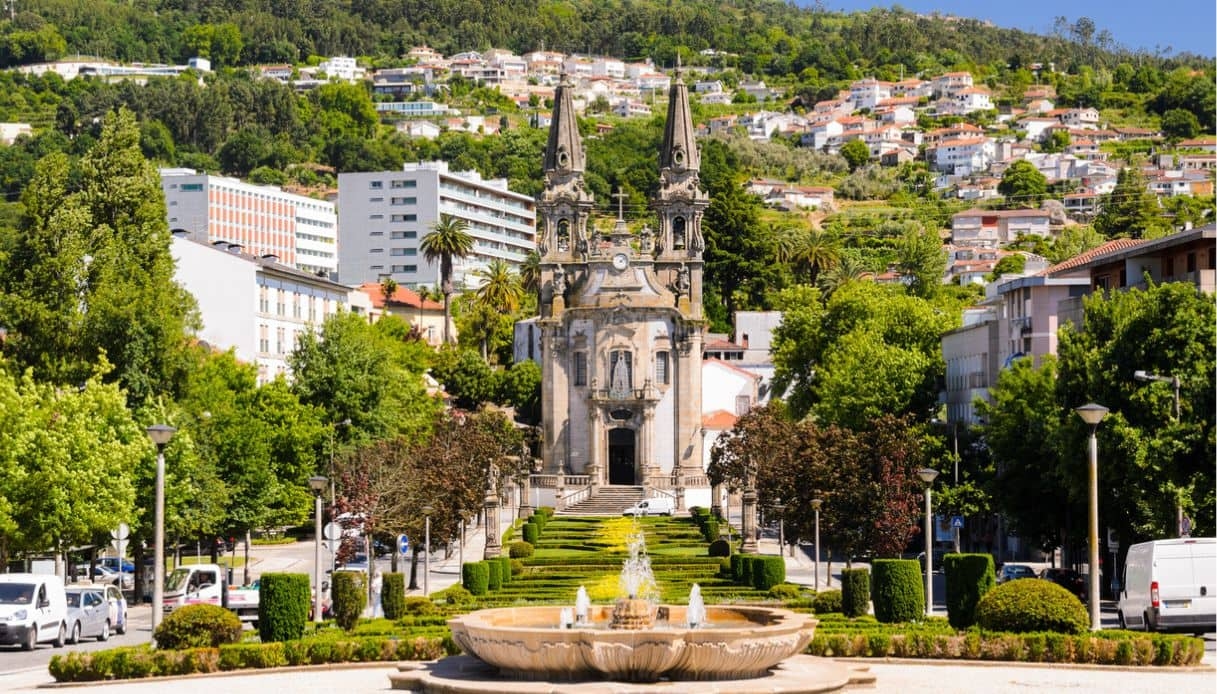What to see in Guimarães, the city that shaped Portuguese history

Guimarães is a city that speaks to the very birth of Portugal: it was the birthplace of Afonso Henriques , the country's first king, and is therefore known as the " cradle of the Portuguese nation ." However, it does not live anchored to memories but appears lively, youthful, and looks to the future with enthusiasm.
In recent years, it has reinvented itself, investing in sustainability and quality of life. It's no coincidence that the European Commission named it European Green Capital 2026 , recognizing its commitment to improving cycle paths, expanding urban parks, and reducing emissions. The goal is ambitious: to achieve climate neutrality by 2030. This spirit of renewal has also earned it a place among National Geographic 's Best of the World 2026 , which includes it among the must-see destinations for 2026.
How to get thereGuimarães is located in the green heart of the Minho region in northern Portugal , about forty minutes from Porto. Porto's Francisco Sá Carneiro International Airport is the most convenient access point for those arriving from Italy: numerous low-cost airlines offer direct flights from major Italian cities.
Trains depart regularly fromPorto and Braga, while buses also run from Lisbon, though the journey takes about five hours. Those who prefer the freedom of unrestricted travel can rent a car and enjoy a short drive on quiet roads, admiring hilly landscapes and picturesque villages.
A great alternative if you're short on time is to join one of the many day tours from Porto, ideal for discovering the best of the city and its surroundings in just a few hours without worrying about timetables or parking.
What to see in GuimarãesThe historic center , a UNESCO World Heritage Site, is an intricate labyrinth of cobbled streets, small squares, and medieval buildings: walking among the granite houses with wrought-iron balconies, you sense a rare harmony between architecture, history, and daily life.
The two most evocative squares are Largo da Oliveira and Praça de Santiago , connected by the imposing fourteenth-century building of the Antigos Paços do Concelho , the old town hall, which boasts an evocative arched passage that separates and at the same time unites them.
But no visit would be complete without the quintessential symbol, the Castle . With its mighty walls and seven crenellated towers rising against the sky, it seems to belong to a tale of chivalry. It is here, according to tradition, that Afonso Henriques was born, the future king who freed northern Portugal from the rule of Galicia and Castile, laying the foundations for the new kingdom. At the castle entrance, a bronze statue of the sovereign watches proudly, a reminder of the strength and determination of a man who made history.
A little further down, another residence tells a different story of Portuguese nobility: the Palace of the Dukes of Braganza . Built in the 15th century by order of Afonso, the first duke of the powerful family, it captivates with its red brick roofs and imposing rooms. After centuries of abandonment, it was restored in the 20th century and became the residence of the dictator Salazar. Today, it is a museum that bears witness to the elegance and wealth of the Portuguese court.
Guimarães is also a city of churches, each with its own identity: the Igreja de Nossa Senhora da Oliveira dominates Largo da Oliveira and houses an interesting museum of sacred art, the Igreja de São Francisco , dating back to the 13th century, enchants with its interior covered in azulejos that narrate episodes from the life of the saint, while more scenic, with its two twin spires and elegant façade, is the Igreja de São Gualter , a symbol of local Baroque architecture.
Finally, it's worth climbing Monte da Penha , a hill covered in forests and trails that offers spectacular views and a bit of coolness on summer days. It can be reached by car, on foot, or by a panoramic cable car with breathtaking views over the rooftops of Guimarães.
siviaggia





